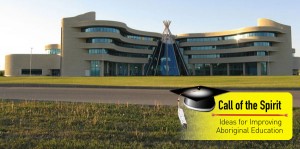This is a discussion paper on information and communication technology (ICT) as it relates to Aboriginal social capital. A first draft of this paper was revised to include feedback from project partners (Crossing Boundaries Aboriginal Voice Initiative) and round-table discussions. A series of five round-table sessions in different regions across Canada with First Nations, Metis and Inuit experts and stakeholders were organized to discuss the content and direction of Aboriginal community ICT networks in Canada. A one-day national symposium was held in January of 2008 with the participation of 23 key stakeholders, experts and practitioners from Aboriginal organizations and other relevant entities, to discuss the document. The symposium focused on the issues raised throughout the study and formulated policy and research priority issues.
Taken from this website: http://media.knet.ca/node/5088
I included this video by TEKKRU Media Team as it displays a strong signal by the aboriginal YOUTH community in regard to ICT implementation and their desire to spearhead the future of the digital world for aboriginal communities: watch?v=crdkNNqv0VE
Source:
Mignone J, Henley H, Brown J, O’Neil J, Ross W (2008) Information and Communication Technology in Aboriginal Communities in Canada: Increasing Aboriginal Social Capital. Faculty of Human Ecology. The University of Manitoba. June.

